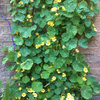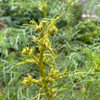Best medium for starting seeds
zaphod42
10 years ago
Related Stories

GARDENING GUIDESSeeds or Seedlings? How to Get Your Garden Started
Growing delicious herbs and vegetables starts with knowing your goals and when you want to plant
Full Story
CONTAINER GARDENS8 Easy Container Plants to Grow From Seed
Get beautiful blooms and herbs in summer by starting these choice garden picks from seed in spring
Full Story
GARDENING GUIDESHow to Stop Worrying and Start Loving Clay Soil
Clay has many more benefits than you might imagine
Full Story
FARM YOUR YARD6 Things to Know Before You Start Growing Your Own Food
It takes time and practice, but growing edibles in the suburbs or city is possible with smart prep and patience
Full Story
HOUSEPLANTSHow to Grow Orchids Indoors
Orchids are the exotic aristocrats of the flower world and can make themselves comfortable in almost any home
Full Story
GARDENING AND LANDSCAPINGCitrus 101: Start Your Own Backyard Orchard
This Earth Day Weekend, Add Some Green, Style and Deliciousness to Your Landscape
Full Story
GARDENING GUIDESHow to Plant a New Lawn From Seed
Choose from more grass varieties and save money over sod by starting your lawn from seed
Full Story
GARDENING FOR BUTTERFLIESA Quick-Start Guide to Bird-Watching for Fun and Learning
Set out some seed and grab your field guide. Bird-watching is an easy, entertaining and educational activity for the whole family
Full Story
HOUZZ TOURSMy Houzz: An Opposite-Tastes Couple Finds a Happy Medium
Cherished antiques rub elbows with contemporary furnishings in this intimate-feeling open-plan Chicago condo
Full StoryMore Discussions










mandolls
tapla (mid-Michigan, USDA z5b-6a)
Related Professionals
Fort Lee Landscape Architects & Landscape Designers · Seabrook Landscape Architects & Landscape Designers · Harvey Landscape Architects & Landscape Designers · Billerica Landscape Contractors · Canton Landscape Contractors · Fair Lawn Landscape Contractors · Garland Landscape Contractors · Escondido Driveway Installation & Maintenance · Fallbrook Driveway Installation & Maintenance · Lakeland Driveway Installation & Maintenance · Riverside Driveway Installation & Maintenance · Clermont Decks, Patios & Outdoor Enclosures · Kyle Decks, Patios & Outdoor Enclosures · San Jose Decks, Patios & Outdoor Enclosures · Eustis Decks, Patios & Outdoor Enclosureszen_man
ken_adrian Adrian MI cold Z5
zen_man
floral_uk z.8/9 SW UK
tapla (mid-Michigan, USDA z5b-6a)
grandmamaloy
tapla (mid-Michigan, USDA z5b-6a)
rhizo_1 (North AL) zone 7
samhain10 - 5a
tapla (mid-Michigan, USDA z5b-6a)
samhain10 - 5a
runswithscissors